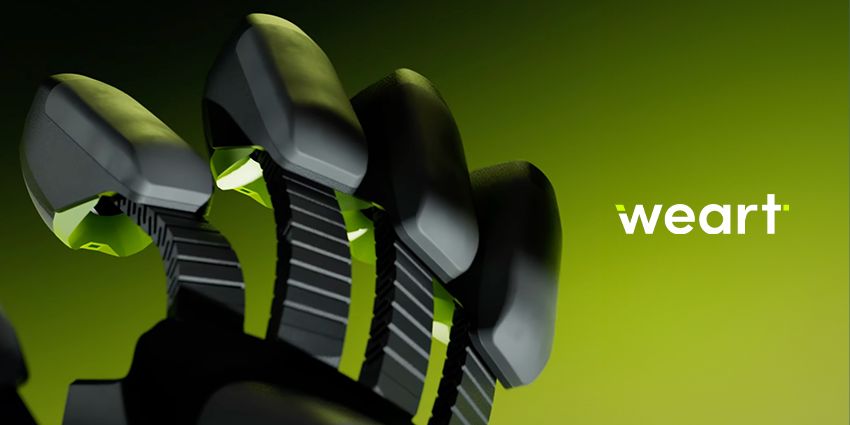It’s no secret that emerging technology is changing the workplace. From AI to XR and beyond, the new technological avenues for businesses today are broader than ever.
In terms of XR, there may be a paradigm shift. Recent IDC reports highlight how consumers could be shifting to MR/AR devices over VR headsets despite the current increase in cost for the newer hardware.
Accompanying hardware integrations could become a crucial backbone for leading headset vendors, regardless of the end-device. This could include technologies such as haptic gloves, biometric devices, and screenless laptops.
Alongside this change in technology comes an increase of VR/AR/MR training solutions in high-risk sectors such as aerospace, healthcare, and construction-to mitigate risks.
However, a fundamental problem quickly arises in the minds of business decision-makers before XR is even on the table: Does simulation training replicate real-world scenarios close enough to ready workers for on-site operations? Haptics may be the answer…
WEART Deploys Haptic-Based Immersive Training in Businesses Today
Realistic haptics allow workers to understand the real-world tactile feedback of a virtual object or a piece of machinery without risking injury or capital loss.
WEART, a leader in enterprise-grade haptic feedback devices, proved that its TouchDIVER product can bring fresh value to XR training modules by simulating elements such as force, textures, and thermals relative to an immersive learning object. Therefore, this gives learners enhanced situational awareness, dexterity, and coordination during simulation exercises.
Guido Gioioso, the CEO and co-founder of WEART, explained that haptic technology, namely the firm’s TouchDIVER gloves, can assist with this goal by simulating on-site procedures realistically enough to give workers the skills needed to take on demanding sectors and job roles.
Gioioso added:
TouchDIVER gives users the possibility to interact in XR as they are used to in real life, enhancing muscular memory activation. Moreover, haptic feedback is proven to create more detailed and durable memory, if compared to pure audiovisual feedback.
With high risks relating to equipment costs, on-site procedures, and trainee safety, creating sophisticated virtual learning is of great value to manufacturing, oil and gas, aerospace or energy leaders and other prospective companies.
Overcoming Commonplace Accessibility Hurdles
WEART recently partnered with PACE Aerospace Engineering & Information Technology GmbH (PACE) to showcase the power of haptic technology in business situations.
WEART’s haptic hardware integration includes WEAVR software, which enables PACE to personalize its company-wide XR training experiences.
By integrating WEART’s haptic technology within the WEAVR content creation framework, aerospace customers can craft bespoke training services to suit specific workplace procedures, with the additional ability to integrate haptic feedback.
WEAVR also enables its workplace end users to use low/no code-building tools, meaning that in-house developer teams can design bespoke training services without much prior coding knowledge.
The no/low code component is essential, especially at this early stage of XR integration into businesses overall.
Accessibility is a critical factor for all enterprise-integrated emerging technologies. How can workers use a new practical solution if they cannot or do not know how to leverage it properly?
The integration of our haptic technology into XR training software like WEAVR allows trainees to experience realistic tactile sensations in an intuitive learning platform. WEAVR ensures a rapid development process for training procedures. Companies without dedicated VR content developers can expand their internal procedures over time and integrate them into existing training simulation projects. This scalability reduces development costs and time, and can be seamlessly integrated into the existing workflow. This perfectly aligns with our goal to make the adoption of haptic technology broader and easier.
With accompanying low/no-code developer frameworks, businesses can quickly create bespoke digital services to match training goals. Equally, the deployment of accompanying hardware, like the WEART haptic portfolio, can also be improved with digital services ready to match the hardware.
Finding the Right Use Case
Finding the proper use case is paramount, though. Without an actual inclination of what an XR or XR-related hardware will award an adopting firm, then no true benefit will emerge, so adopters must understand the problem they are solving with the technology investment.
The adoption of haptic gloves also advances an accessibility factor which is holding VR devices back in the business world: controllers.
Not everyone is a gamer, and factors such as region and age could significantly alter an individual’s knowledge of controller input. More adaptable accessories like the TouchDIVER can assist with this usability journey.
Gioioso also added:
When we touch, grasp, manipulate objects in real life we don’t click buttons. And when we interact with objects they typically don’t vibrate. Moreover, workers need to be trained before starting an experience with the controllers.
Haptic gloves provide users with the most natural, intuitive and realistic interface to interact with environments: their hands.
The market for haptic gloves is increasing, with insights from Expert Market Research forecasting a compound annual growth rate (CAGR) of around 53 per cent from 2024 to 2032, meaning businesses may significantly increase their use of haptic gloves in the next five years.







